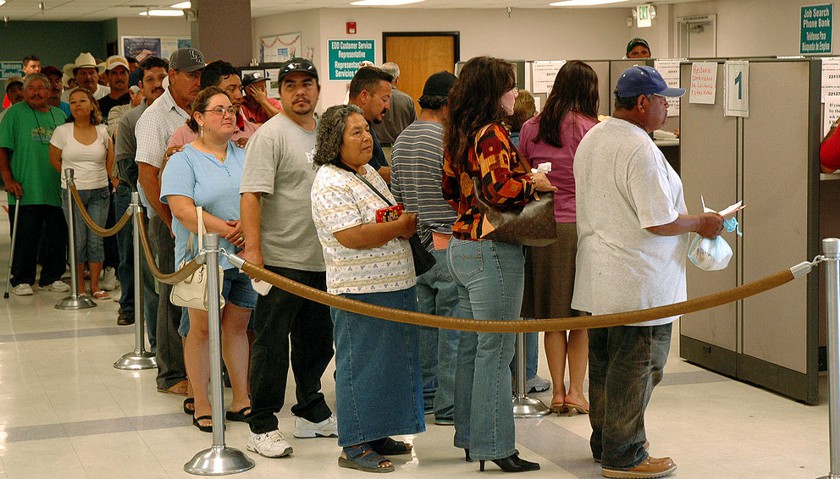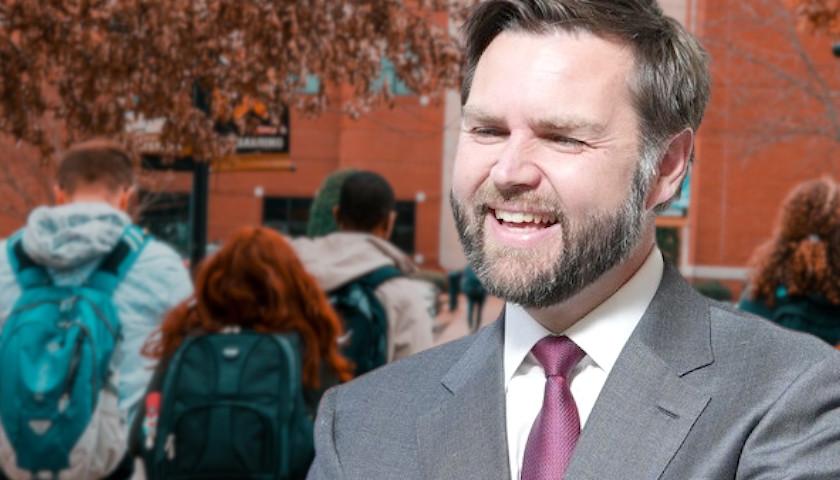By Robert Romano
The U.S. economy added 293,000 jobs in May, according to the household survey published by the Bureau of Labor Statistics, bringing the total to nearly 3.4 million more Americans reporting they have jobs since President Donald Trump took office in Jan. 2017.
That averages about 212,000 new jobs every month, to a total of 155.47 million jobs today — which is not bad at all.
Between Jan. 2009 and Jan. 2017, during former President Barack Obama’s two terms of office, the economy added 9.9 million jobs, or about 103,000 a month.
To be fair, Obama took office during one of the worst recessions in modern history. By Dec. 2009, the job losses reached their peak at 8 million jobs lost. At that stage, 138 million Americans had jobs. If you start counting there, 14 million jobs were added between that point and the end of Obama’s two terms.
When you average that out over the 85 months that followed, it comes out to 165,500 new jobs a month.
Therefore, Trump’s pace of 212,000 new jobs a month since he took office definitely beats the trendline set by the prior administration. It’s accelerating.
That’s the good news. But it’s also a mixed bag.
The civilian non-institutional population also increased 182,000, and almost nobody entered the labor force on a net basis. Instead 170,000 left the labor force.
So, there’s still two realities for many Americans. For those who have stayed in the labor force, things are definitely improving.
But for the 9 million or so of those aged 16 to 64 who either left the labor force or never entered on a net basis since the late 1990s, there’s a different reality. One defined by a lack of opportunity. All told the number of 16 to 64-year olds not in the labor force increased from 41.6 million in 2009 to 45.6 million in 2016, as labor participation dropped from 78 percent to 76.8 percent, according to the U.S. Census Bureau.
33 million out of the 45 million 16 to 64-year olds not in the labor force had no disability in 2016. That’s up from 31.7 million in 2009. The number with a disability not in the labor force increased from 10.8 million to 12.2 million.
Overall, there was a slight increase in the disability rate, from 10 percent to 10.5 percent nationally, and the number of disabled as a percent of those not in the labor force also increased, from 25.9 percent to 26.7 percent.
Deeper in the numbers, you see big spikes in disability cropping up in particular states. In West Virginia, the disability rate jumped from 10.4 percent in 2009 to the highest in the nation at 17.8 percent. Kentucky went from 11.87 percent to 16.4 percent. Arkansas went from 12.5 percent to 15.4 percent. Mississippi went from 12 percent 14.7 percent.
The states with disability rates above 13 percent in 2016 were West Virginia, Kentucky, Arkansas, Mississippi, Alabama, Oklahoma, Tennessee, Louisiana, Maine and South Carolina. None of those were above 13 percent in 2009.
These states also saw some of the larger drops in labor participation over that same period. It just so happens that some of the states hardest hit by the last recession reported some of the largest increases in persons with disabilities.
Note that excludes Baby Boomers who are also leaving the labor force as they retire.
It also is not necessarily a report on the number of people collecting disability benefits, which have increased by 1 million beneficiaries since 2009, far less than the increase of 4 million working age adults out of the labor force, and less than the 1.7 million more who said they were disabled in the U.S. Census Bureau survey.
In West Virginia, the working age population decreased while those stating a disability remained the same. In the other states, population was rising slightly albeit at slower rates, while the number of those saying they were disabled increased disproportionately.
That’s a long-term systemic indicator there. It transcends administrations as labor participation among working age adults has dropped markedly since the turn of the century. This has hollowed out a generation of opportunity.
As a result, the growth of the civilian labor force has been hampered over those years, and in turn so has economic growth, which has not averaged above an inflation-adjusted 4 percent since 2000, and not above 3 percent since 2005.
Even with the accelerating jobs gains since 2017, it is hard to say when the U.S. economy might turn the corner and post a big gain in the Gross Domestic Product (GDP). In the first quarter of 2018, growth was just 2.2 percent, according to the Bureau of Economic Analysis.
So what can be done? Certainly bringing more production back to the U.S. from overseas per President Trump’s policies to put America first on trade will bring more jobs back, which can also help to boost labor participation. But more must be done to address incentives to participate in the labor force, and more should be done to study the increases of reported disability in states that were particularly hit hard by the recession, for example, by allowing individuals to keep their disability health coverage if they work more hours. There’s definitely something going on there.
– – –
Robert Romano is the Vice President of Public Policy at Americans for Limited Government.





